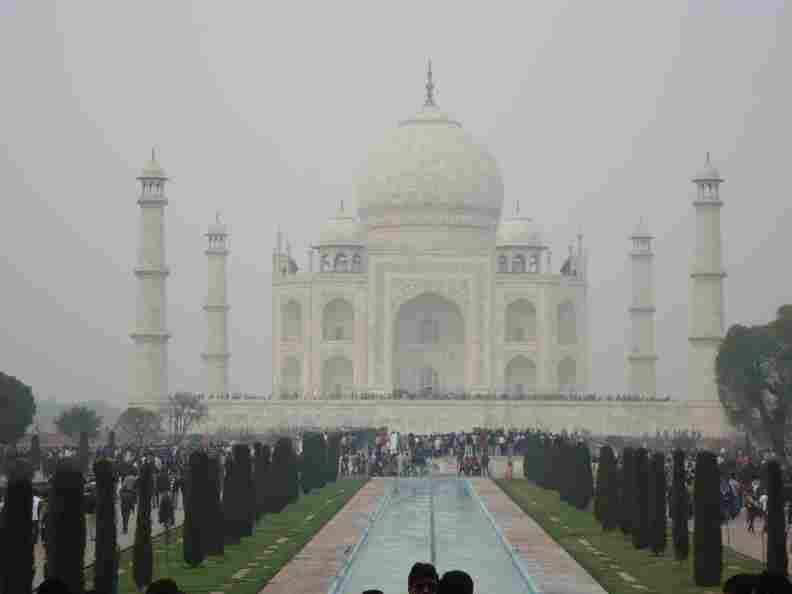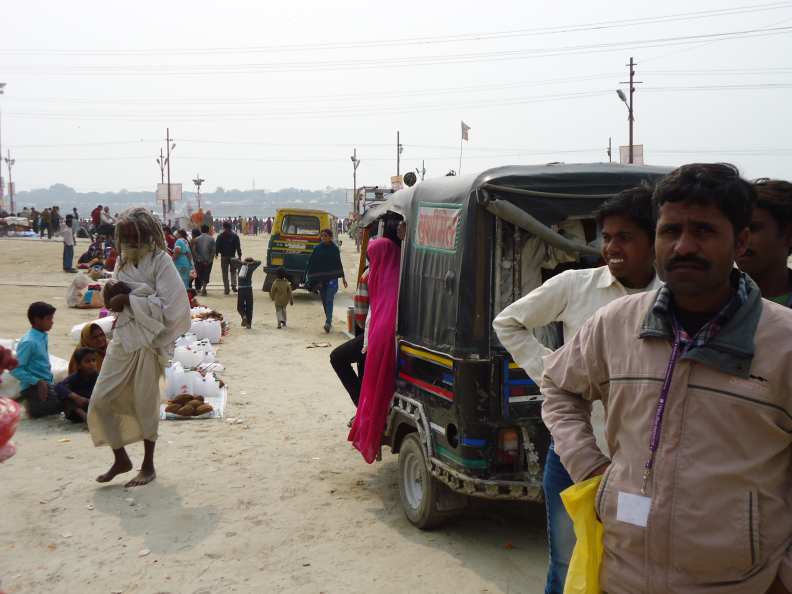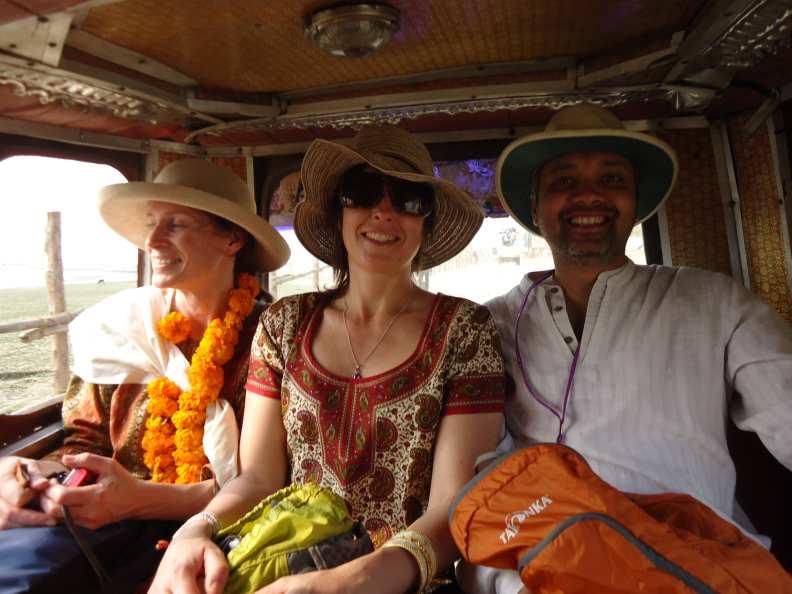As published on Yoga City NYC
Thousands and thousands of people crossing makeshift pontoon bridges over the Ganges river became a familiar sight during my 10 day visit to Allahabad, India
The men carried walking sticks or pushed bicycles, while many women, dressed in dazzling saris, lead small children or elderly relatives. They walked in silence with a steady, quiet focus, their belongings bundled on their heads and backs because they were headed to the Kumbha Mela.
While there are small Melas every year throughout India, the one near Allahabad, where the Ganges, Yamuna and mythical Saraswati rivers meet, is the most important and the most auspicious. This grand gathering happens only once every 12 years, with a Maha—or great— Kumbha Mela every 144 years (the last one was 2001).
And of course, it is the largest. When I arrived, staying on the campus of theHimalayan Institute about a mile downstream from the main site, a million people had already taken up residence.
More problematic, it’s also the loudest, with countless PA systems blasting mantras, lectures, and “swa-has” for miles around, at all hours of the day and night. I got used to falling asleep to two or three of them chanting at top volume and completely at cross-purposes.
The incessant din added a very real challenge to my daily meditation practice. The banks of the Ganges were very noisy. Numbers swelled again on the auspicious bathing day of February 10th, that coincided with the new moon, a time of new beginnings.
In one day, 10 million people flooded the grounds. Over the month or so of the Mela, 100 million people were expected to visit, living in the makeshift tentcamps, or curled up at the side of the dusty dirt tracks, running shops, serving food to wandering sadhus, and policing the 8 square kilometer area.
For such an enormous “pop-up city” it was impressively peaceful. Saints, families, villagers poor and rich mingled. We never felt in danger, even in such huge throngs. In fact, our biggest hassle was Indian pilgrims taking photos of us Westerners, and even that was done in a very friendly way.
I had come to experience the energies of the crowds and the practices of the sages. But as I reckoned with my jet lag, the noise of the fair, and the exhaustingly huge gathering of people, I wondered what everyone was really coming for, and what it means to be a pilgrim.
Kumbha means “pot” and “mela” means fair: the story is that the demi gods, running out of the elixir of happiness, or amrit, joined with their enemies, the water demons, to churn the ocean and produce more of the heavenly nectar.
But when the nectar at last rose from the sea, the gods stole the amrit for themselves alone. A battle ensued until Vishnu intervened, whisking the valuable pot of nectar away. It took 12 days for Vishnu to escape—hence the 12 year lapse between Melas—hotly pursued by both angry parties.
The pilgrims crossing into the Kumbha Mela grounds were not concerned to hear the myth again—they already knew it. They might seek out a sage or take in a dance performance; but their main purpose was to bathe in the Ganges and be purified by her inexhaustible living waters.
And not just anywhere, but as close as possible to the Sangam—the confluence of three holy rivers, where auspicious energy is most concentrated at this time.
The Ganges, the mother and spiritual source, could not only wash away transgressions and karmic impediments, but also replenish the divine grace in our lives. The Yamuna river, representing worldly prosperity, helps to keep our home, work, and social lives to progress harmoniously.
Lastly, the mythical Saraswati river, important in Vedic times, but since disappeared underground, represents the fortification of intuition and inner knowledge.
In other words, to bathe at the Sangam was like getting an extremely powerful recharge.
For Westerners, the massive number of people was undeniably exciting. Some in our group braved the highly toxic E. coli levels and dipped themselves in theSangam. Others just dipped their mala beads or sprinkled some of the holy water over their heads.
But the moment of highest spiritual buzz for me came outside of the official Melagrounds. On February 10th, the auspicious bathing day, senior teachers at the Himalayan Institute conducted a fire ceremony on campus, repeating a Durgamantra to help mitigate the fear and anger in ourselves—and in the world.
As we offered the samagri—the offering—to the sacred fire we chanted together in common purpose, propitiating the forces of transformation and new growth, planting seeds of change. It was not an empty ritual; I could feel the energy we were creating.
One important element of meditation or spiritual practice is trustful surrender to the mysterious forces at work in our world. And feeling that palpably around me was worth all the effort of getting to India, the disturbance of the loud nights, the hot, dusty and exhausting Mela, and my initial bewilderment over what it meant to be a pilgrim. I felt fortified, and that, I believe, was the whole point.
















